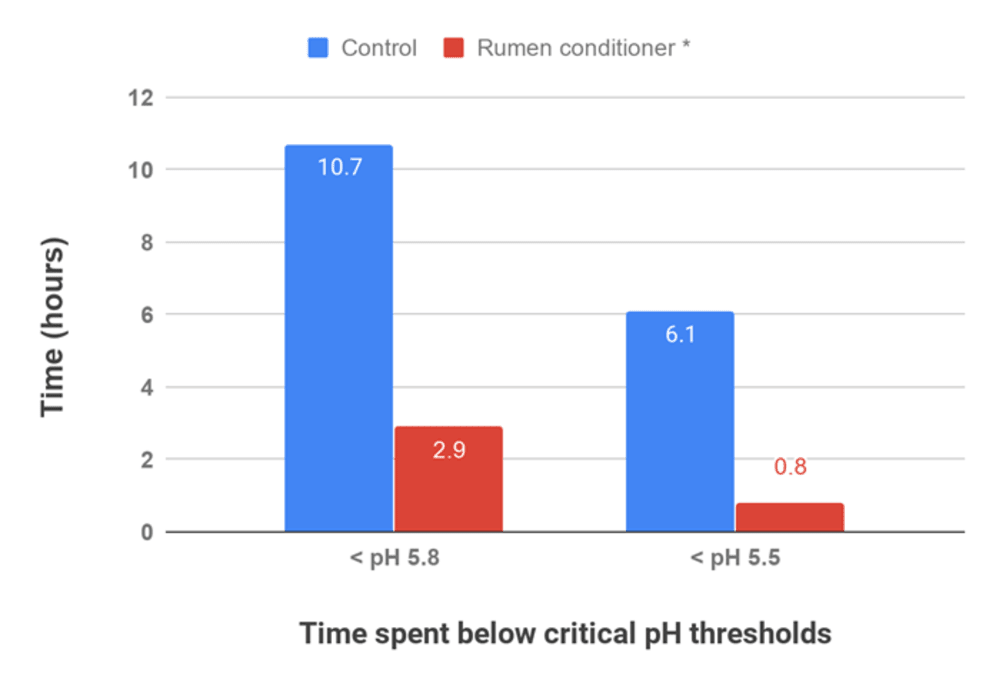More milk output and quality from the same feed an opportunity to help margins this winter
Published Wednesday, 10th October 2018
Maximising the value of milk produced from every kg of feed will be critical as herds face higher winter feed costs, claims AB Vista’s Dr Derek McIlmoyle.
With forage stocks tight, and additional bought-in feeds to make up the shortfall adding to costs for most herds, margins are under pressure. The opportunity to lift milk income by improving feed conversion efficiency is therefore something few can afford to ignore.
“We all know that rumen fermentation is the foundation on which dairy cow feeding is built,” explains Dr Derek McIlmoyle, AB Vista’s EMEA Technical Director. “The threat when forage is in short supply is that rations end up less well balanced, and rumen function is less well supported as a result, with knock-on effects for production and cow body condition.”
Supporting milk production
One of the growing challenges facing milk producers is that modern Holstein Friesians are genetically programmed to produce large volumes of milk, regardless of whether adequate rations are provided. As a result, any failure to provide a properly formulated diet will not only reduce milk output, but also force the cow to draw on valuable body reserves in an effort to maintain production.
“With herds bred for higher yields over the last decade or two, it’s no longer a case of cutting back the feed if forage is tight and cows then happily producing less milk,” Dr McIlmoyle continues. “These cows are driven to produce milk, and the impact of not fully supporting their nutrient requirements will not only be a short term reduction in yields and milk quality, but also long term negative effects on lactation performance, fertility and longevity.”
As well as providing sufficient nutrients, ensuring the ration is correctly balanced to optimise the rumen, and so maximise the value extracted from both home-grown and bought-in feeds, is critical. This includes avoiding issues such as sub-acute ruminal acidosis (SARA), which can seriously disrupt fermentation efficiency and lead to significant losses in terms of both milk yield (up to 2.7 kg/cow/day) and quality.
Fine tuning rations
“Stimulating good rumen function and minimising the time rumen content is below pH 5.8 – when microbial activity and fibre digestion are compromised – should be the top priority,” he advises. “So limit in-parlour feeding to 2 kg/cow/milking, and formulate rations to balance both the amount and rate of energy and protein release in the rumen.
“Careful use of rapidly fermentable energy in particularly – primarily sugars and starch – will help balance the rumen degradable protein in grass silage and drive efficient microbial growth. Liquid feeds are typically the most cost-effective source of sugars, with the added benefit of binding feed ingredients together to minimise the chance of cows sorting out concentrates from the all-important fibre.
“Rumen-protected or rumen-bypass fats are also worth considering to help increase the energy density of rations without negatively impacting rumen conditions and fermentation efficiency.”
Improving rumen conditions
The impact rumen conditions can have on output is highlighted by the results of a 12-week trial in Ireland using 42 mid-lactation Holstein Friesian cows fed a typical 55:45 concentrate:forage ratio (equal mix of grass and maize silages) total mixed ration (TMR). Even in the absence of any obvious acidosis threat, adding a calcareous marine algae-based rumen conditioner significantly improved milk output, with increased buttefats (3.87 vs. 3.68%), similar milk proteins (3.26 vs. 3.21%) and a numerical 0.84 kg/cow/day rise in milk yield.
“The net result was a 7% increase in total milk solids production (2.35 vs. 2.19 kg/cow/day) and a 1.74 kg/cow/day rise in energy-corrected milk yield,” Dr McIlmoyle highlights. “That’s a worthwhile amount of extra milk value from the same feed, and the impact would be even greater if there was a higher risk of sub-acute ruminal acidosis (SARA).”
A small-scale in-vivo trial run using a similar ration highlighted the substantial improvement in rumen pH when the conditioner was included, with time below pH5.8 (the point at which fibre digestion is compromised) falling from 10.7 to 2.9 hours/day. The period below the critical pH5.5 threshold for clinical acidosis was reduced from 6.1 to 0.8 hours/day (see Figure 1).
Figure 1 – Effect of slow-release rumen conditioner on rumen pH (* Acid Buf)
“The potential for modern high energy density early and mid-lactation rations to create overly acidic conditions in the rumen is substantial, and fibre digestion can be negatively affected for large parts of the day even if there are no obvious outward signs of acidosis,” he continues. “Increasing the time rumen content is within the optimum pH5.8-6.2 range improves rumen function and energy release, with knock-on benefits for feed efficiency, milk output and milk fat in particular.”
“Just don’t be tempted to use sodium bicarbonate, or even combination buffers containing sodium bicarbonate, as a rumen buffer. It may reduce rumen acidity, but does so by increasing the rate of feed passage through the rumen, leading to a reduction in feed efficiency. And that’s the last thing milk producers need this winter.”
FEATURED CONTENT
AB Vista launches online dietary fibre calculator to help nutritionists optimise animal diets
AB Vista supports customers’ sustainability programmes with emissions reporting service
Stimbiotic product Signis’ effectiveness in pig diets recognised in peer-reviewed research paper
Achieve greater feed cost savings whilst maintaining animal performance by targeting maximum nutrient utilisation
Sign up for AB Vista news
A regular summary of our key stories sent straight to your inbox.
SUBSCRIBE© AB Vista. All rights reserved 2023
Website T&Cs Privacy & Cookie Policy Terms & Conditions of Sale IDC Policy


























